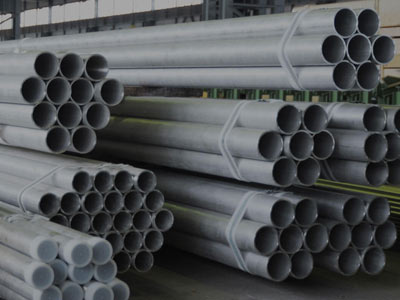
Within the family of stainless steels, there are more than 57 standard alloys, along with many proprietary alloys produced to suit the specific environment they must endure. Whether in the human body, at subzero temperatures or inside the impeller of a jet engine, there is a stainless steel alloy to suit the needs of almost any extreme application or surrounding.
 Among the many grades and surface finishes of stainless steel is 300 series stainless steel (austenitic, generally nonmagnetic). 300 series stainless steels are comprised of approximately 18 to 30 percent chromium and 6 to 20 percent nickel. This series has higher corrosion resistance than series 400 stainless, is easy to maintain and holds its structure well at high temperatures. Sometimes referred to as “18-8”, 300 series stainless steel parts are made from grades such as 302, 302HQ, 303, 304, 305, 384 and XM7, with 304 being the most commonly used of all stainless alloys.
Among the many grades and surface finishes of stainless steel is 300 series stainless steel (austenitic, generally nonmagnetic). 300 series stainless steels are comprised of approximately 18 to 30 percent chromium and 6 to 20 percent nickel. This series has higher corrosion resistance than series 400 stainless, is easy to maintain and holds its structure well at high temperatures. Sometimes referred to as “18-8”, 300 series stainless steel parts are made from grades such as 302, 302HQ, 303, 304, 305, 384 and XM7, with 304 being the most commonly used of all stainless alloys.
The different grades within the 300 series have similar corrosion resistance, but slight differences in their chemical compositions offer improved resistance to specific environments. 300 series stainless is often used in industrial settings (dyeing, food and beverage industry, paper pulp processing industries) because it withstands corrosive and acidic environments well.
The addition of molybdenum to 300 series stainless steel forms grade 316 stainless, an austenitic, nonmagnetic alloy that is highly resistant to sodium and calcium brines, along with many corrosive chemicals used in the industrial processes associated with photography; textile processing and manufacturing; paper pulp industry; rubber, dye, rayon, and bleach manufacturing. Grade 316 stainless steel is also an ideal alloy for surgical implants as it is biocompatible and resists the corrosive environment of the human body.
300 Series stainless steels are classified as austenitic, and are hardenable only by cold working methods. These grades of stainless have chromium (approx. 18 to 30%) and nickel (approx. 6 to 20%) as their major alloying additions. Type 304 is the most widely used alloy of all stainless steels. 300 Series Stainless steel alloys resist corrosion, maintain their strength at high temperatures and are easy to maintain. 300 series grades are inventoried in in stainless steel plate, sheet, bar, pipe, tube and structural products.
Good oxidation resistance in intermittent service to 840°C and in continuous service to 900°C, although not usually chosen for this environment. Exposure to temperatures above about 400°C will result in progressive removal of work hardening effects; at approximately 800°C the strength will be similar to an annealed 301. In creep applications a work hardened grade 301 can even reduce to lower strength than an annealed 301.
All 300 Series stainless steels are well-known for their resistance to extreme corrosion, simple maintenance, and the ability to maintain strength at high temperatures. 300 Series also resist etching and cracking better than other grades of stainless steel. They are commonly used in aerospace, automotive, construction, and other applications. Due to the many benefits of metal spinning combined with the unique characteristics of stainless steel, the results are ideally formed, aesthetically-pleasing products that include a wide range of industrial parts and equipment, cookware, instruments, decorative parts, and more.